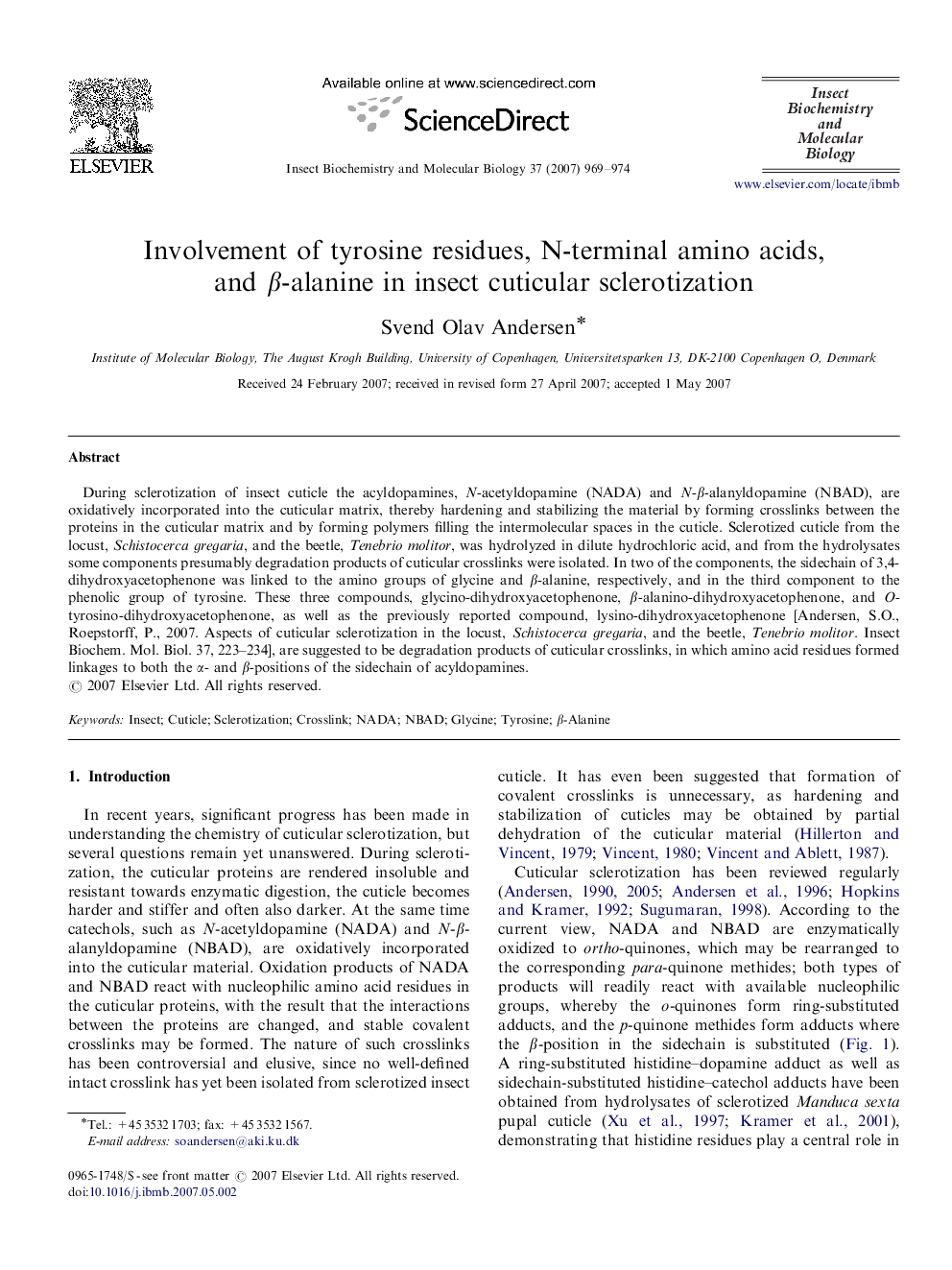| Article ID | Journal | Published Year | Pages | File Type |
|---|---|---|---|---|
| 1983011 | Insect Biochemistry and Molecular Biology | 2007 | 6 Pages |
During sclerotization of insect cuticle the acyldopamines, N-acetyldopamine (NADA) and N-β-alanyldopamine (NBAD), are oxidatively incorporated into the cuticular matrix, thereby hardening and stabilizing the material by forming crosslinks between the proteins in the cuticular matrix and by forming polymers filling the intermolecular spaces in the cuticle. Sclerotized cuticle from the locust, Schistocerca gregaria, and the beetle, Tenebrio molitor, was hydrolyzed in dilute hydrochloric acid, and from the hydrolysates some components presumably degradation products of cuticular crosslinks were isolated. In two of the components, the sidechain of 3,4-dihydroxyacetophenone was linked to the amino groups of glycine and β-alanine, respectively, and in the third component to the phenolic group of tyrosine. These three compounds, glycino-dihydroxyacetophenone, β-alanino-dihydroxyacetophenone, and O-tyrosino-dihydroxyacetophenone, as well as the previously reported compound, lysino-dihydroxyacetophenone [Andersen, S.O., Roepstorff, P., 2007. Aspects of cuticular sclerotization in the locust, Schistocerca gregaria, and the beetle, Tenebrio molitor. Insect Biochem. Mol. Biol. 37, 223–234], are suggested to be degradation products of cuticular crosslinks, in which amino acid residues formed linkages to both the α- and β-positions of the sidechain of acyldopamines.
